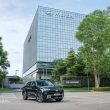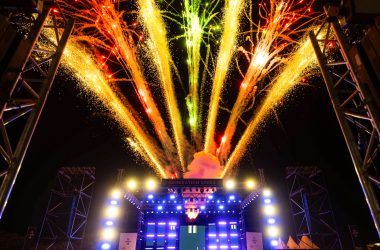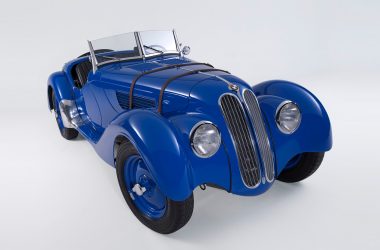Photography: Saidatta Naik, Shrenith Bhandary
The Hyundai Creta is turning 10 years old! Effectively, 2025 marks a decade of the Creta’s dominance as a midsize SUV. The Creta has set benchmarks and clocked consistent, explosive sales numbers year after year, and this landmark achievement called for a celebration. So, we decided to head to a place that’s equally explosive! A place that put India on the global map, just like the Creta has done for Hyundai, putting the car maker on the SUV map like no other SUV has.
We’re talking about Pokhran, the very location of India’s first nuclear test, conducted back in 1974. You see, Hyundai sold more than 1 million Cretas in less than 10 years, making it the first SUV to do so. To draw parallels, the 1974 nuclear test made our country the first nation outside of the five permanent members of the United Nations Council to become nuclear capable. And like the 1974 test that helped in establishing India’s technical prowess on the global stage, the Creta has established Hyundai’s prowess as an SUV maker.

The Creta has also evolved progressively over the years to become more premium, in terms of its design, interiors and packaging. But while buyers have welcomed every iteration of the SUV with open arms, its current version has given the Creta’s appeal (and sales!) a significant boost. In fact, 1 lakh units of the new Creta were sold in just six months after its launch last year, a record in itself, thanks to the Creta’s new, more upmarket design, luxurious interiors and of course, the long list of features, helping it become a game changer.
The Creta was also proving to be a perfect match for Rajasthan’s excellent roads. Its suspension was soaking up undulations well and making for a comfortable drive, without affecting vehicle stability or driver confidence. And it’s this demeanour that helps the Creta impress SUV buyers with varying needs. Rajasthan’s highways were adding to the joy of being behind the wheel too as traffic was sparse and the tarmac smooth, and I also had the Creta’s8-speaker equipped Bose premium sound system play crisp notes. But while most of the country has been experiencing good rainfall, that wasn’t the case with the parts of Rajasthan I was driving through, despite overcast skies.

This resulted in hot and humid weather but the Creta’s dual-zone climate control system and ventilated front seats were keeping me supremely comfortable. These are just the tip of the iceberg though, as the Creta has always been equipped with class-leading features. We are talking about features like the large, panoramic sunroof and dual 10.25-inch screens that add to the sense of classiness. Then there’s the flat-bottomed, leather-wrapped steering wheel, and an electrically adjustable driver’s seat. You also get LED headlamps, LEDDRLs, LED fog lamps and dynamic turn indicators. The list of safety features is even longer, as you get six airbags as standard, 360-degree view, hill assist, electronic stability control, switchable traction modes, tyre pressure monitoring, disc brakes all round and Level 2 ADAS.

But while we may not realise the importance of ADAS in metro cities as traffic is more organised, heading outdoors or driving on country roads helped me experience the safety net of the Creta’s Level 2ADAS. You cannot predict the movement of oncoming vehicles in villages and small towns, but the Creta’s ADAS has been tailored for Indian driving conditions, and helps a lot. In such places you are bound to have two-wheelers come from the wrong side, or cattle straying onto the road. And that’s when features like Forward Collision Avoidance for cars, pedestrians and cyclists, and blind spot collision avoidance are very effective. And on highways, it’s features like Lane Keep Assist, Lane Departure Warning and Driver Attention Warning, as also Smart Cruise Control with Stop and Go, Lane Following Assist and High Beam Assist that add to convenience.
Driving to Pokhran allowed me to experience the Jamnagar-Amritsar Expressway too. As a six-lane, access controlled highway with a speed limit of 100kmph, it turned out to be the perfect playground for the Creta!I was driving the version powered by Hyundai’s tried and tested, 1.5-litre naturally aspirated petrol engine mated to an automatic gearbox. This is one of the most popular versions, given the engine’s refinement and its balance between performance and efficiency. The Expressway was allowing me to make the most of the engine’s 115PS and 144Nm without compromising fuel efficiency, as ARAI-certified fuel efficiency is a very impressive 17.7kmpl. Additionally, the engine’s silky-smooth feel and automatic gearbox were making my drive effortless, while the able handling made for a confident feel.

Once off the Expressway I had to take country roads and even encounter off-road patches, but the Creta seemed unfazed by it all. Its suspension ensured I was comfortable, whether on tarmac or not. This is where the Creta’s Traction modes also came to good use, offering a confident feel, even on gravel. Pokhran sits in the Jaisalmer district but is not a big city and is located remotely, which is one of the reasons why it was chosen for the nuclear test. Pokhran is also dry and arid with a topography that is typical of the Thar Desert, and is home to a few salt flats as well. While most people talk about the Sambhar Lake as a salt water lake in Rajasthan, not many know that Pokhran is also home to salt water lakes. In fact, the name Pokhran literally translates to the place of five salt ranges, and it was hard to resist the temptation to stop by a stunning looking lake to soak in the views on my way to the city. My journey to Pokhran was thus turning out to be rejuvenating too, as I was enjoying the desolateness around me, driving on the Jodhpur Jaisalmer highway.

Interestingly, just like the other major cities in Rajasthan, Pokhran has a fort too. It has been home to the city’s royal family and also houses a museum and hotel. But while it may not be as massive as some of the other forts in Rajasthan, this one is quite spectacular too. Built in the 14th century, the fort’s Rajput architecture, use of red sandstone and intricate carvings on its walls and balconies help it look very beautiful. Back in the day the fort was a defence structure too besides being the residence of the royal family, which added to its importance. Once done exploring the fort, I decided to scout for the location where the first nuclear test was conducted in 1974. I spoke to locals but as expected, the location was classified so getting there as a civilian was next to impossible. This was disappointing but I still decided to drive to Khetolai, the village closest to the test location. The exact location is deep inside a restricted military area that can be reached only after passing multiple security check points guarded heavily by the Indian army. But talking to locals and learning more about the place made for interesting revelations.

Besides being remote and in a desolate location, Khetolai was also devoid of underground water. This made it ideal for nuclear testing, not just in terms of safety, but also to minimise the risk of nuclear radiation contaminating the water. This was important, as underground water is a prime source of water for such regions. Then there was the fact that Khetolai and Pokhran are part of a desert land, which would help in containing the explosion. All these factors point to the deep research undertaken for our country’s first ever nuclear test. To draw parallels, Hyundai has engineered and created the Creta after a lot of research and studying demands of Indian buyers and also keeping their needs in mind, and also given it timely updates, ensuring it tops sales charts consistently, month after month, year after year.

So, be India’s first nuclear test or the Creta’s explosive performance on sales charts, the extensive research done before zeroing in on specifics has helped in achieving landmark results like never before. Driving to Pokhran and learning more about the nuclear tests that put India on the global map thus made for an interesting couple of days thus. And doing so in the Creta, a nameplate that has helped Hyundai become a superpower in the world of SUVs was perhaps the best way to do it!








